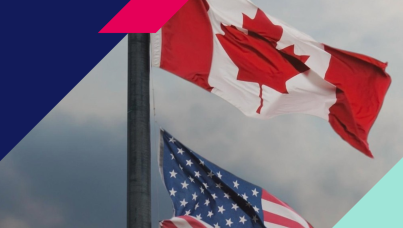Canadians And Oral Health
Virtually all Canadians (98%) think dentists are important to maintaining overall health, on par with physicians (98%). Approximately the same proportion (95%) believes dental hygienists are important in maintaining overall health, on par with pharmacists (95%) and optometrists (95%). Nearly half of Canadians (46%) report having no cavities, slightly less than four in ten (37%) have only some cavities. Just one in ten (12%) Canadians have never received a dental procedure; others have received a variety of procedures such as fillings (59%), extractions (46%), and crowns (24%). Three-quarters of Canadians (76%) consider gingivitis a serious problem, and 86% believe a number of ailments can result from gingivitis, such as bleeding gums (70%), serious dental diseases such a periodontal disease (50%), and mouth pain (45%).
These are the findings of an Ipsos-Reid/Colgate poll conducted between February 3rd and February 5th, 2004. The telephone survey is based on a randomly selected sample of 1062 adult Canadians. With a sample of this size, the results are considered accurate to within 1773.1 percentage points, 19 times out of 20, of what they would have been had the entire adult Canadian population been polled. The margin of error will be larger within regions and for other sub-groupings of the survey population. These data were statistically weighted to ensure the sample's regional and age/sex composition reflects that of the actual Canadian population according to the 2001 Census data. Nearly all Canadians (95%) Canadians consider good oral health to be an important factor in maintaining good overall health, with 75% who say it's "very important." Just 2% do not believe it's "very important" and 3% are unaware of any link between good oral health and good overall health.
- There are no statistically significant demographic findings for this question.
- Canadians 18-54 years of age are more likely than their elders to floss (67% vs. 52%) and brush their tongue (59% vs. 45%) on a regular basis; Canadians 35 and older are more likely than young adults to eat a well balanced diet to maintain good oral health (66% vs. 58%).
- Women are more likely than men to visit the dentist (71% vs. 64%), eat a well-balanced diet (70% vs. 58%), floss (69% vs. 55%), brush their tongue (62% vs. 47%), and check their gums (57% vs. 49%).
- Canadians with at least some post-secondary education are more likely than those without to visit the dentist (72% vs. 61%), eat a well-balanced diet (70% vs. 55%), floss (69% vs. 52%), check their gums (59% vs. 43%), and not smoke (57% vs. 39%).
- Residents of Saskatchewan/Manitoba appear to change their toothbrush most frequently with 28% who say they change it more often than every three months, compared to 16% of residents of British Columbia, 17% of residents of Quebec, 19% of residents of Ontario, 19% of residents of Atlantic Canada, and 20% of residents of Alberta.
- Canadians 35 years of age and older are more likely than young adults to change their toothbrush every six months (30% vs. 20%). Three-quarters (74%) of young adults change their toothbrush at least every three months.
- Residents of Ontario seem to visit the dentist most frequently with 54% who go every six months, compared to 23% of residents of Saskatchewan/Manitoba, 36% of residents of Atlantic Canada, 41% of residents of Quebec, 41% of residents of Alberta, and 49% of residents of British Columbia.
- Likelihood of visiting the dentist every six months increases with annual household income (
- There are no statistically significant demographic findings for this question.
- There are no statistically significant demographic differences between those who consider dentists and/or dental hygienists important and those who do not.
- Residents of Quebec (53%) are the least likely to have cavities, followed by residents of Atlantic Canada (52%), Ontario (43%), British Columbia (41%), Alberta (41%), and Saskatchewan/Manitoba (40%).
- Canadians 55 years of age and older are more likely than those who are younger to have no cavities (57% vs. 41%), while Canadians 18-54 years of age are more likely than their elders to have some cavities (44% vs. 21%).
- Men are more likely than women to have some cavities (41% vs. 34%).
- Canadians 35 years of age and older are more likely than young adults to have had extractions (51% vs. 34%), crowns (29% vs. 12%), and removable dentures (27% vs. 3%). Canadians 18-34 years of age are more likely than their elders to have had braces (22% vs. 10%).
- Women are more likely than men to have had removable dentures (22% vs. 17%).
- Canadians with an annual household income of $30,000 or greater are more likely than others to have had extractions (47% vs. 41%), crowns (26% vs. 15%), and braces (14% vs. 11%).
- Younger Canadian adults are more likely to than those who are older to consider gingivitis a serious problem (18-34 79%, 35-54 77%, 55+ 72%).
- Women are more likely than men to consider gingivitis a serious problem (81% vs. 70%).
- Canadians with at least a high school diploma are more likely than those without to consider gingivitis a serious problem (78% vs. 63%).
- Canadians with an annual household income greater than $60,000 are more likely than others to consider gingivitis a serious problem (81% vs. 72%).
- Women are more likely than men to say gingivitis can result in more serious dental diseases such a periodontal disease (55% vs. 45%).
- Canadians with at least some post-secondary education are more likely than those without can result in more serious dental diseases such a periodontal disease (57% vs. 39%).
-30-
For more information on this news release, please contact:
John Wright
Senior Vice-President
Ipsos-Reid Public Affairs
(416) 324-2900



